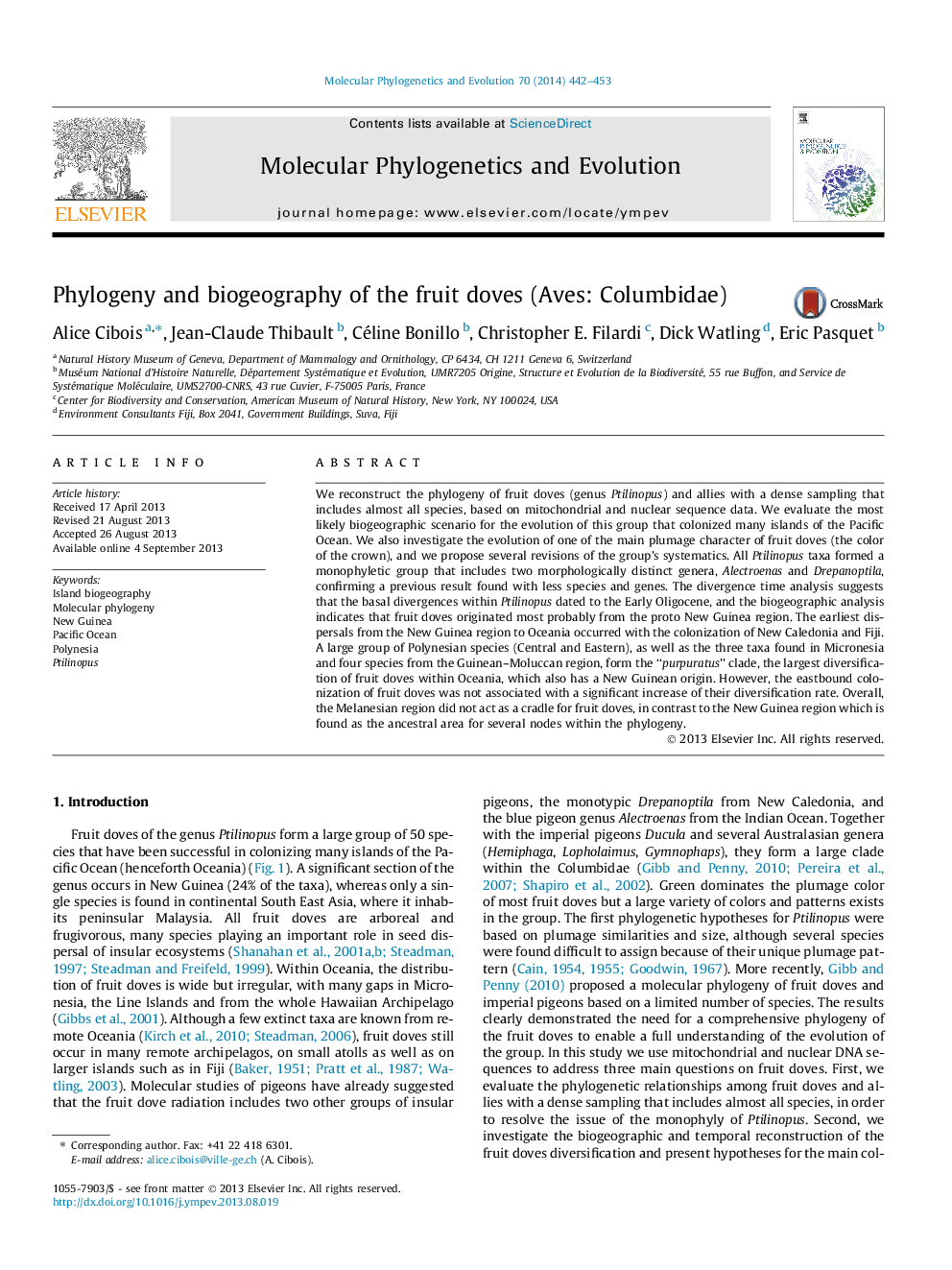| Article ID | Journal | Published Year | Pages | File Type |
|---|---|---|---|---|
| 5919410 | Molecular Phylogenetics and Evolution | 2014 | 12 Pages |
â¢Ptilinopus forms a clade that includes Alectroenas and Drepanoptila.â¢Basal divergences dated to the Early Oligocene.â¢Fruit doves originated most probably from the proto New Guinea region.â¢Colonization of Oceania was not associated with a significant increase of diversification rate.
We reconstruct the phylogeny of fruit doves (genus Ptilinopus) and allies with a dense sampling that includes almost all species, based on mitochondrial and nuclear sequence data. We evaluate the most likely biogeographic scenario for the evolution of this group that colonized many islands of the Pacific Ocean. We also investigate the evolution of one of the main plumage character of fruit doves (the color of the crown), and we propose several revisions of the group's systematics. All Ptilinopus taxa formed a monophyletic group that includes two morphologically distinct genera, Alectroenas and Drepanoptila, confirming a previous result found with less species and genes. The divergence time analysis suggests that the basal divergences within Ptilinopus dated to the Early Oligocene, and the biogeographic analysis indicates that fruit doves originated most probably from the proto New Guinea region. The earliest dispersals from the New Guinea region to Oceania occurred with the colonization of New Caledonia and Fiji. A large group of Polynesian species (Central and Eastern), as well as the three taxa found in Micronesia and four species from the Guinean-Moluccan region, form the “purpuratus” clade, the largest diversification of fruit doves within Oceania, which also has a New Guinean origin. However, the eastbound colonization of fruit doves was not associated with a significant increase of their diversification rate. Overall, the Melanesian region did not act as a cradle for fruit doves, in contrast to the New Guinea region which is found as the ancestral area for several nodes within the phylogeny.
Graphical abstractDownload full-size image
